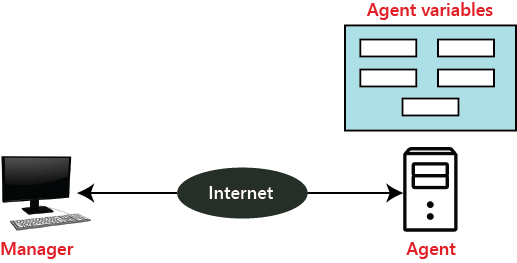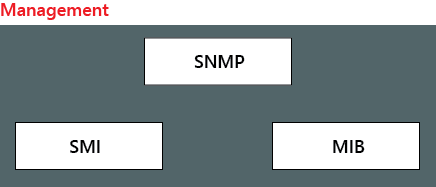SNMP (Simple Network Management Protocol)SNMP was defined by IETF (Internet Engineering Task Force). It is used to manage the network. It is an internet standard protocol that monitors devices in IP networks and collects and organizes the information (data) of these devices. SNMP is supported by most network devices such as the hub, switch, router, bridge, server, modem, and printer, etc. The concept of SNMP is based on the manager and agent. A manager is like a host that controls a group of agents, such as routers. 
SNMP Manager: It is a computer system that monitors network traffic by the SNMP agent, and it queries these agents, takes answers, and controls them. SNMP Agent: It is a software program that is located in a network element. It collects real-time information from the device and passes this information to the SNMP manager. Management componentsIt has two components

SNMP:It defines the structure of packets that is shared between a manager and an agent. SMI (Structure of Management Information): SMI is a network management component that defines the standard rules for the naming object and object type (including range and length) and also shows how to encode objects and values. MIB (Management Information Base): MIB is the second component of the network management. It is virtual information storage where management information is stored. SNMP basic operation
Difference between all versions of the SNMP?
SNMP PortThe SNMP sends instructions and messages using both port 161 and port 162. The SNMP agent uses the port 161, and the SNMP manager uses the port 162.
Next TopicSPI Protocol
|
 For Videos Join Our Youtube Channel: Join Now
For Videos Join Our Youtube Channel: Join Now
Feedback
- Send your Feedback to [email protected]
Help Others, Please Share










